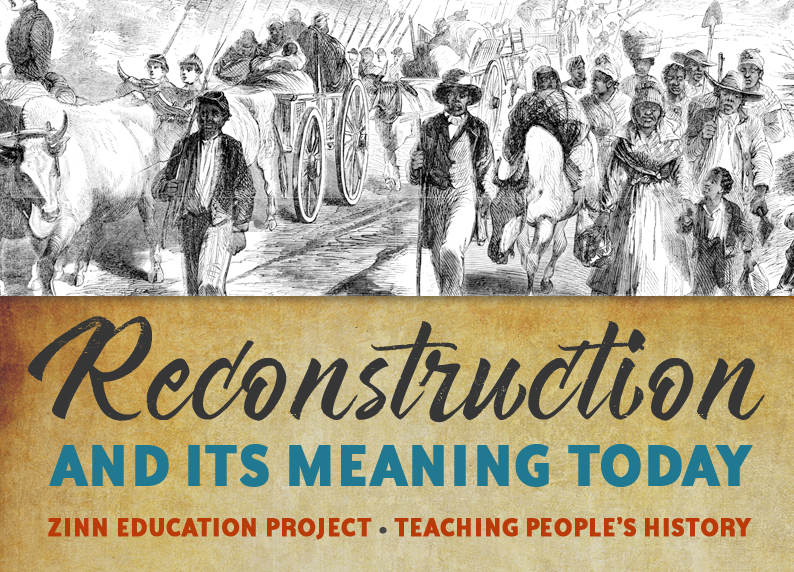 As part of our Teach Reconstruction campaign, the Zinn Education Project offers free lessons, including “Reconstructing the South: A Role Play” by Bill Bigelow and “When the Impossible Suddenly Became Possible: A Reconstruction Mixer” by Adam Sanchez and Nqobile Mthethwa.
As part of our Teach Reconstruction campaign, the Zinn Education Project offers free lessons, including “Reconstructing the South: A Role Play” by Bill Bigelow and “When the Impossible Suddenly Became Possible: A Reconstruction Mixer” by Adam Sanchez and Nqobile Mthethwa.
The first lesson engages students in thinking about what freed people needed in order to achieve — and sustain — real freedom following the Civil War. It is followed by a chapter from the book Freedom’s Unfinished Revolution on the possibility of a radically democratic land reform following the war. The second lesson asks students to make connections between different social movements during Reconstruction.
We offer teacher reflections below on the lessons and the importance of teaching about Reconstruction. Many of the comments provide insights into the “aha’s” students have as a result of studying the Reconstruction era and its meaning today.
I have used multiple teaching resources from the Zinn Education Project throughout my years as a teacher, but the one I keep going back to is Reconstructing the South: What Really Happened. I base my entire Reconstruction unit around this teaching material, and it is always extremely interesting for me and the students.
The primary sources are simple and easy to understand for my 5th through 8th grade students, but it also doesn’t shy away from topics they probably have not discussed before, like “What should happen to Confederate leaders?” and “Who should be allowed to vote in the South?”
Every year, I see students come into class having a basic understanding of Reconstruction but leaving a with a deeper knowledge that shows many different perspectives that they definitely did not consider before.
While I use other teaching resources from the Zinn Education Project throughout the school year, this specific Reconstruction source seems to be very popular with my students.

Every year, I lead the When the Impossible Suddenly Became Possible mixer with my 11th grade students who are studying U.S. history and American literature. This mixer is the perfect way to close out our Reconstruction unit, which focuses on the achievements of the recently enslaved as well as the challenges of Jim Crow policies. Watching my students engage closely with specific individuals from this time period and work through the relevant conflicts from this time period is a joy every year as I see students truly grapple with the various situations during Reconstruction.
This mixer is the most effective method I can imagine for providing context and deep understanding — not to mention engagement — for my students on this important topic. I give my students name tags to wear, and they often wear them with pride through the rest of the day, sharing what they’ve learned with other staff members. As a teacher, nothing is more powerful than hearing from other teachers that students are sharing the knowledge they’ve gained from your class.
For too long, Reconstruction has been relegated to a footnote, but centering this time period is critical to understanding our present. Indeed, showing students the accomplishments of real individuals, despite the complexities and challenges of the time, is engaging and encouraging to them as they consider a future as engaged citizens who can also make a difference.
In years past, I have found teaching Reconstruction to be difficult. It is the first topic of the year and I always try to bring in unique and engaging ways to get students’ attention and set the pace for the remainder of the year. The Zinn Education Project lesson Reconstructing the South: What Really Happened offers great primary sources that show the different perspectives and points of view of a very difficult and pivotal point in American history.
This lesson has students think about the challenges of newly emancipated people by answering different questions about what life may have been like in the South. My students were able to talk with each other and discuss these issues, and many of the groups got really into it. It was designed to be challenging for the students and there were no straightforward questions, so students had to think critically. As groups, I had the students look at the documents and come up with solutions together.
A great lesson and a great activity to get the ball rolling for the start of the year!

When teaching Reconstruction to my middle school students, I have my students go through the process of designing a Reparations bill by participating in extensive group discussions and utilizing a digital workspace. It has worked out well, and my administrator mentions it often as an example of excellent practice. Having the students examine what they think should have happened before they learn about what actually happened has been a fantastic experience.
We engaged in a series of small debates and I have never had more successful conversations in my classes. I would suggest offering different ways for your students to participate (we typed responses and talked out loud), while remembering that listening is a completely valid way of engaging. Repair: Students Design a Reparations Bill followed by the lesson Reconstructing The South: What Really Happened is a powerful sequence of learning. I couldn’t recommend them more and I am grateful to have them as part of my curriculum.
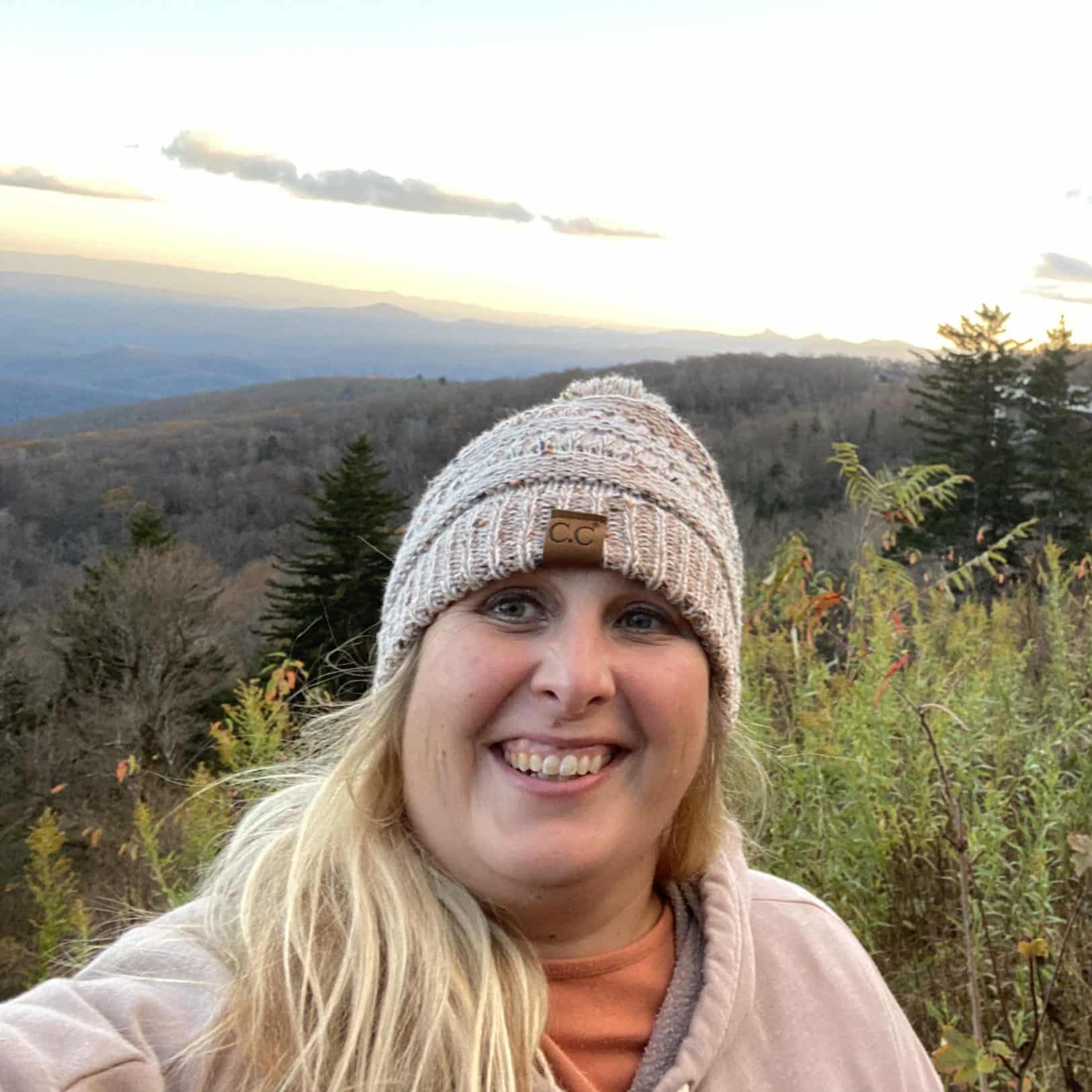
We used the role play Reconstructing the South to launch our study of Reconstruction.
One of my students was inspired to do further research on the 13th Amendment and the role it played in mass incarcerations. She presented her findings to the class and led a discussion about why it is important to study these historical challenges and how knowledge of them can be used to impact the future.
As the lesson ended, we looked at the guiding question for Reconstruction, “What kind of country is this going to be?” We also asked, how can we do our part to impact current racial disparities and divisions. Student creativity was evident during this lesson and students always enjoy the opportunities and challenges of a role playing lesson.
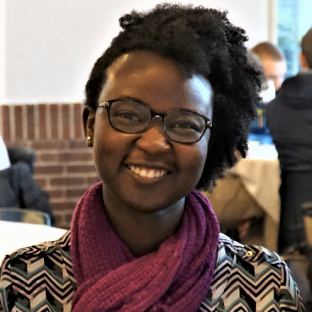
My experience learning about the Reconstruction Era in school (which I’m sure was like most people’s) centered around the Reconstruction Amendments and the actions of the President and Congress.
As a teacher, I wanted to go beyond the amendments to introduce my students to the individuals who were involved in the abolition movement and the fight for equality and justice.
The Reconstruction Mixer lesson did just that. Students took on roles of people involved not just in the abolitionist movement but also in the women’s rights and union workers’ movement. It’s a good day when students know the names and stories of people who fought for justice in their community and their nation.
The diversity of the people included in the activity led to some interesting conversations. In our post-mixer discussion, students spoke up about the tensions between different movements, especially the abolitionist and women’s rights movements.
My class delved into a deeper conversation about what to do when you don’t get what you are fighting for — do you support the other movements or do you stand firm and focus on only what you want? This is a discussion we would not have had if we had just looked at the Reconstruction Amendments and the actions of the people at the top! I will definitely be doing this lesson again in my class.
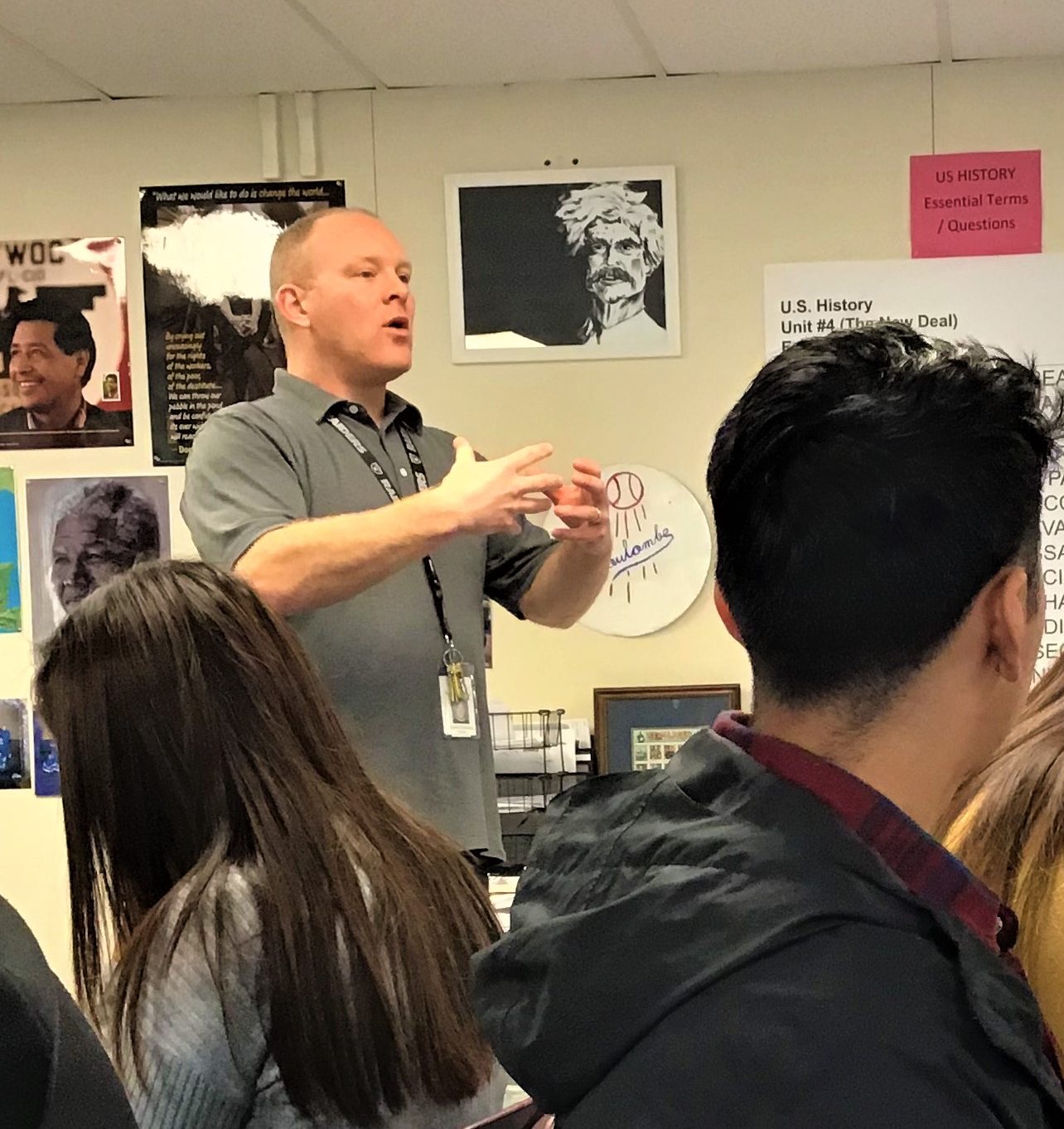
Role plays are such an excellent way of engaging students in learning. When the Impossible Became Possible: A Reconstruction Mixer allows students to interact with both the content and one another to further their learning. I chose to do the lesson at the end of our unit on Reconstruction. Students had a good basis of understanding, but only from the newly freedmen and women’s perspective. This activity revealed to the students, as well as myself, the new possibilities that many Americans recognized after emancipation.
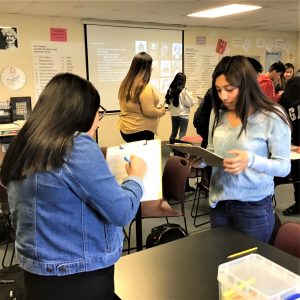
Students in Andy Coulombe’s classroom interview each other during the Reconstruction Mixer activity.
During our debriefing discussion, some students were struck by the narrow thinking behind many activists who placed, as one student mentioned, “priorities of justice,” believing that the nation could only have justice for one group at a time. Another student even mentioned how easy it was for many of the people involved in social activism to lose site of the bigger picture of “justice for all,” refuse the collaboration and solidarity of others and allow racism and sexism to derail their own movements. One group of students connected past learning to debunk this myth by mentioning how the Women’s Liberation Movement, Chicano Movement, American Indian Movement and African-American Civil Rights Movements all co-existed and moved towards social justice during the same decades of the 20th century.
I was impressed with the connections that this activity allowed for my students to make. It was a perfect lesson to include in our study of Reconstruction.

When I started planning this year’s U.S. History course at Harwood Union High School in Duxbury, Vermont, I started “from the ground up,” meaning with the grassroots and with the stories and experiences of the actual people who lived here before Europeans. All year, I have continued to help students learn to “read” histories as stories, told by various people, but usually by “the winners.” Our guiding question for the year concerns not “history(ies)”, but the past. The actual past as it happens, which takes more work, and it takes breaking with conventional myths and texts.
Reading A People’s History of the United States almost 30 years ago changed my life and helped me break with those myths and texts and how I understood the world. It also influenced me as a journalist in the United States and Haiti.
I wanted to offer my students the same inspiration and ongoing epiphany (or series of epiphanies) and so I’ve been putting in many extra hours revisiting the work of Howard Zinn and others and also discovering new resources.
In the fall, we spent some five weeks studying Native American nations, oppression and resistance, and then proceeded to settler-colonialism and so on. The lessons and activities would not have been possible without this website, Voices of a People’s History, articles by Bill Bigelow, and a few other sources . . .
When the Teach Reconstruction report emerged, I was blown away. Together, the students and I radically altered the syllabus and we spent about three weeks on this period, watching parts of documentaries, reading some Eric Foner, some primary sources, and parts of the report.
Finally, I gave students an assignment that involved lobbying our department about the importance of teaching a specific topic: either Reconstruction, or one of the other crisis-level issues we’d been studying — gerrymandering, Citizens United, voter suppression, and a few other similar issues. Most chose Reconstruction.
Students were invited to either write a letter to everyone in the department with an accompanying draft lesson plan, or create a “persuasive poster” with additional information online via a QR code. Below are some of the posters.
I used the Reconstructing the South lesson in our inaugural African-American US History class. Many students had heard of slavery, but not the Reconstruction era. Having them tell the story and negotiate rights during the role play was the beginning of changing their interpretation of Black history from a deficit mindset to one of advocacy!
“I can’t believe I never learned about this.” — J.L.
“It’s empowering to know that my people WERE working for change, even back then, even with all the bad things that had happened to them. It makes me think we’re stronger than we’re given credit for.” — J.A.
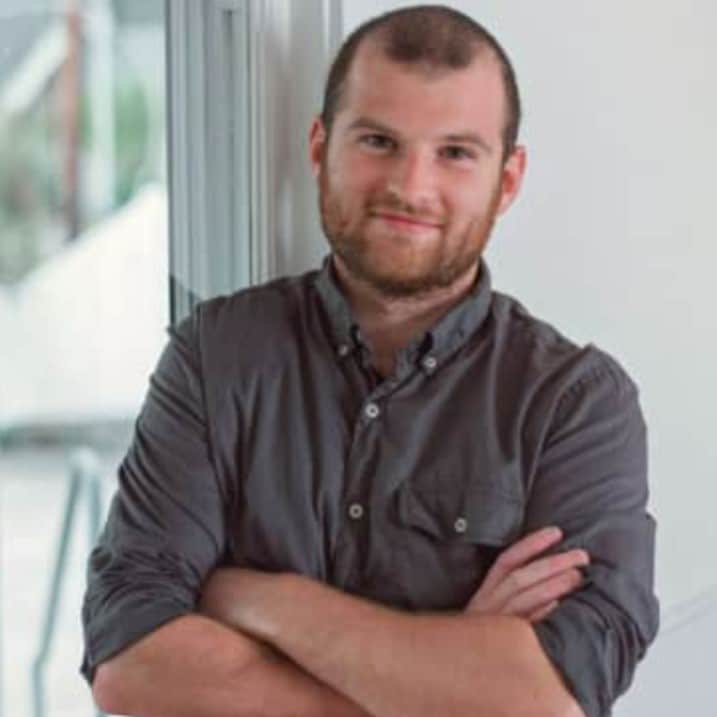
Last year my district had an after hours book club that focused on Teaching for Black Lives and utilizing lessons from the text in our classrooms. In order to prepare for the Reconstruction Role Play, I first divide my class into several groups to teach the events that led up to that moment in history. Students are give three days to prepare a 40 minute lesson in small groups, which they then present to the class. The lesson must include a bell ringer, a main activity, and then some sort of assessment to check if everyone understood the information. Between presentations I have three days to teach anything the students missed.
The first group to go discusses the transatlantic slave trade. This is not the first time the students have heard of the slave trade but it is the first time it is the focus of the whole week. Following the first group is the Civil War, and then comes a group that introduces Reconstruction. I find that by having the students study each subject in a group and then teach it, they are more invested in the material than if I was to present it to them on my own. We then follow up our week on Reconstruction by completing the Role Play and finish our unit looking at the triumphs of Black soldiers and citizens during the era, including the growing number of voters and politicians.
As I do not wish for Reconstruction to be something the students memorize and forget, we revisit the subject/time period during our Women’s Suffrage unit, again in our Industrialization/Railroad unit, for a third time during the Wild West, and then recap all four units at the end in a Legacy of the 1800s section. Highlighting important figures like Bass Reeves and Sojourner Truth helps students to connect to the issue on a personal level and see Black figures as the heroes of their own story.
Our middle school does a big two-month unit about the Civil War. What I find each year is that I run out of time to bring things full circle in the classroom. We usually do not cover in depth (only briefly mentioning) the Reconstruction Era. We simply run out of time. I am hoping I can start to change this.
I chose to first teach this lesson to a small number of students in an after-school setting. What I found was that the lesson had a lot of impact on the students’ thinking. It did an awesome job of putting them in the freedmen’s shoes. It really made them think about the difficulty in deciding what to do after the Civil War. It also made them realize that just because the war was “finished,” didn’t mean the fighting was finished.
This unit really made students discuss what is “fair.” I heard several students say, “That’s not fair!” in their discussions. I believe that anytime that a teacher can get students thinking and discussing the idea of what is “fair” and the ideas of equality and liberty, then the lesson is worthwhile.
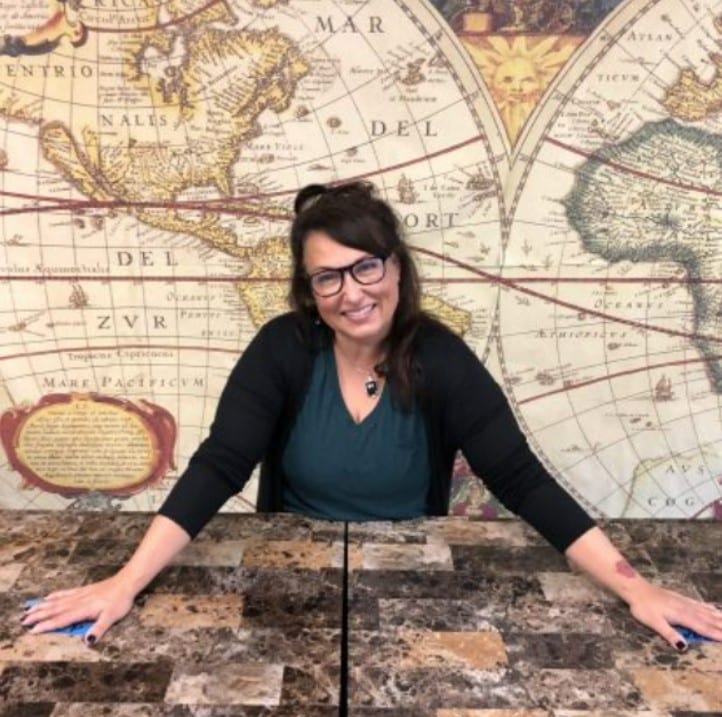
I used When the Impossible Suddenly Became Possible last year and LOVED it. The stories the students learned in the mixer brought to life how extraordinary this time was and not just something to brush past on our way to our unit on the Second Industrial Revolution. It segued us into that unit as well as into the Great Migration. This curriculum led to excellent “push/pull” conversations, too.
The most powerful story for me was that of Benjamin Montgomery who actually bought Jefferson Davis’, the President of the Confederacy, plantation! What a man! What a story!
For the mixer, I had my students create name badges and they put their interview sheets on a clip board. We sat outside at tables and when one interview was over they raised their hands and moved to a new table to hear a new story. I participated as well and loved interacting with my students.
When we finished, we went inside and each table group discussed what they learned. Then we had a class discussion about what surprised us, what inspired us, and what upset us. Back in their table groups (of 3 or 4) they connected what they learned from the activity to other themes in history and/or today. A second class discussion led to topics The Trail of Tears, immigration, the Holocaust, Japanese internment, and police brutality. They even added in Supreme Court decisions and first amendment rights!
This activity came in the last month of the school year for my eighth grade class and WOW. I was so impressed by the higher-order-thinking it facilitated and inspired by how aware these kids are to what is right with America, and what is still so very wrong.
I really appreciated the way Reconstructing the South puts students into the perspectives of freed people. It has always been a struggle for me as a teacher to encourage students to think from this perspective rather than just the perspective of former plantation owners. The activity also set the stage for students to consider possible outcomes and recognize that history and government policy are not inevitable.
Here are some of the highlights of the arguments some of my students made:
“We should remove the plantations and replace them with something else since it would be traumatic for former slaves to live with them in their community.”
“We could continue to grow cotton in the south because we could get economic and political support from the north since the northern industry and politicians rely on cotton production.”
“Confederate generals should be charged as war criminals since they were involved in the civil war. Harsh punishment is well-deserved.”
“We should tax and fine war criminals instead of imprisoning or executing. We do not want the south to fight back again.”
“All people should be freed on the plantations and troops should patrol the plantations to make sure that people were free.”
“Wasn´t the south really poor after the war? How are they going to pay a fine or tax?”
“The issue on who should control the plantations after the war is absolutely an important one because this was the very foundation on partially almost every issue the North and South had between each other. This also was a very large issue that would essentially define Southern culture because it meant giving up their land and lifestyle that they had and giving it to those who had worked for them previously. “
“We decided that they will be taxed and that the northern troops will occupy and check the south for slaves. This will help keep the southerners from rising up again and try to fire up the war again.”
“My group said a contract should be signed for no slavery and that all southern states should be taxed and that slaves were to get some money back from their owners, and maybe there should be a guarantee that free black men will be able to find work and get paid. I think that class needed to realize that the south was still for slavery and it would not go away easily so we needed to set strict laws and rules in place to prevent it from coming back.”
“They want to share the land which makes no sense because why will you share a field with your ex owners who beat you all of the time? Plus you will probably still get threatened and I wouldn’t want that”
“My group decided that it would be the best decision to give the plantations to freed African American men and women because they were the ones who kept them running smoothly for years, while their masters just sat back and watched. However, the class decided to have the white plantation owners share their lands with freed African Americans equally. This could lead to feuds between lands and plantation owners because the white men and women in the south could become very upset with the idea of giving away their land to someone they have seen as inferior to themselves.”
“Slavery should’ve been abolished a long time ago because it would’ve prevented the war in the first place. However, slavery definitely needed to come to an end after the war, so the new laws should’ve been strictly enforced. Nobody should have to do any labor for no expense, for instance, indentured servants or slaves. “
“Freed slaves should not have to promise anything in order to own land because America should move past slavery and African Americans being forced to grow cotton is a thing of the past.”
“Slavery is not going to go away immediately because it has been around for a long time and it was considered a lifestyle for many. We are going to have to think of multiple different ways to get rid of it and make sure it does not come back.”
Students were eager to take their parts. Re-enactments always seem to be a hit, even before we actually do them! The biggest aspect of our time with it was talk of who actually was making the decisions and why was no one affected by the decisions involved in that process.
The most powerful aspect occurred during our debrief after. The sudden realization across the room that somehow things are not all that different today swept the room like a wave. As if they all got it at once. And then the hands started shooting up left and right as everyone wanted to speak. Fantastic! We had so much spillover we added an extra day to the lesson just to cover current-day tie-ins.

The lesson Reconstructing the South: A Role Play is excellent for exploring the Reconstruction time period. Too often, periods of American history like this one are presented without relevant connections to today’s world, which make our not-so-distant past seem like ancient history to young learners.
The role play offers students the opportunity to see the importance of the time period: how much help formerly enslaved people needed, how formerly enslaved people were offered opportunities like never before, and how the country had the opportunity to make major changes in equality and civil rights. This has led to discussions about today’s racial issues of police, the justice system, employment, housing, etc., and, as a result, I have been able to open discussions on issues relating to federal powers versus states’ rights when it comes to civil rights. This is a wonderful lesson that I plan on using again and again.
I recently used a modified version of this lesson in my 9th grade U.S. history course. This simulation led to an “Aha!” moment once the students realized that freedmen and freedwomen were not actually invited to participate in any of the decision-making processes following the Civil War. This then primed students for an inquiry into what extent life changed for freedmen and freedwomen.
I used an excerpt from W. E. B. Du Bois’s “The Propaganda of History” to help students frame their thinking and analyze historical evidence in terms of its “truthfulness” in representing the reality of the experiences of freedmen and freedwomen during the Reconstruction Era.

I recently used the lesson plan When the Impossible Suddenly Became Possible: A Reconstruction Mixer in my 9th grade Honors U.S. history class. I had previously used the ‘If There Is No Struggle…’: Teaching a People’s History of the Abolition Movement lesson, where I had students take on the role of members of the American Anti-Slavery Society to debate abolitionism in the mid-1800s. My students had enjoyed that activity, and when I found the Reconstruction Mixer, I was excited to try it.
For context, this lesson came after a few days of discussion and reading about the Reconstruction Era. Students had built some background knowledge about Reconstruction, the major goals/problems, and the backlash to increased civil rights and freedoms of African Americans. We had looked at examples of Thomas Nast’s political cartoons for perspectives on Reconstruction in the North, and students had done a gallery walk of Black Codes passed in Mississippi right after the Civil War.
I felt that this lesson would open their eyes to the myriad possibilities that existed for change during Reconstruction and get beyond the typical, textbook narrative that it had failed due to political compromise, or worse, because of poor governance by “carpetbaggers” and African Americans in the South. I taught the lesson in one day, and I found I needed to do minimal setup for students to take on the role of a historical figure. My students loved the chance to get into “character” and think about what their historical figure had stood for. Once the mixer got started, students naturally took on the roles and partnered up to share their stories and gather information to answer the questions included in the plan. We haven’t studied the Women’s Suffrage Movement or the Labor Movement so it was a great chance for students to start to get background on those issues in a very organic, unscripted way.
I had students reflect on 3 questions after the mixer: (1) Whose story did you find most interesting? Why? (2) What did you learn about the Reconstruction period from this activity? (3) How did you feel about this activity? Some student responses:
The Reconstruction period was the best time to fight for equal rights and establish new laws!
I found Henry Highland Garnet’s story to be the most interesting because he continued fighting for other people’s freedom.
I learned Black people got to have some freedom in the Reconstruction period.
I learned that everyone had different reasons to fight for equal rights, women’s rights, or Black men’s rights, and sometimes these people didn’t all agree.
It was cool! I wish we had more time!
Many different people were taking a chance to change America.
The role-plays, simulations, and general outside-the-box teaching activities offered by the Zinn Education Project, including the lesson When the Impossible Suddenly Became Possible, give me an opportunity to teach history in a way I wished my high school teachers had embraced. The creators of these lessons clearly understand that students often learn best from EACH OTHER rather than through direct instruction, rote memorization, or textbook reading. With minimal background and setup needed, this lesson was a powerful addition to my unit on Reconstruction.
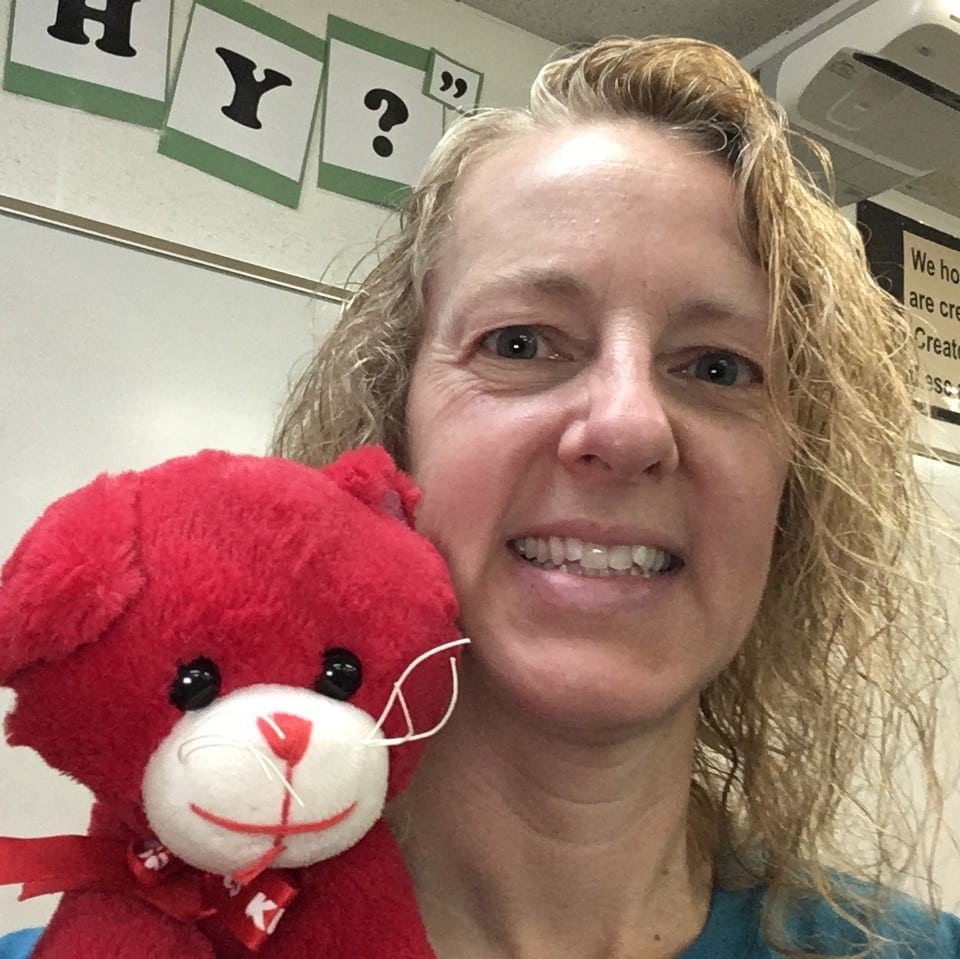
My 8th grade U.S. history students were engaged in their roles and, later, more engaged than ever before in finding out what choices were actually made during the years following the Civil War. As we compared and contrasted solutions they had proposed with what really happened, they were able to better understand the cause-and-effect that led to the need for the Civil Rights movement in the 1950s and 1960s and to the racial tension and struggles that continue in the U.S. today. They could see how things might have turned out differently, if only different decisions were made in the past.
I think the real power in this lesson, though, is in the impact it will have on the future. Having analyzed how decisions made 150 years ago still impact us today, my students are more likely to be purposeful and thoughtful in their own civic involvement as they move forward toward and through adulthood.
Thanks for the great lesson!
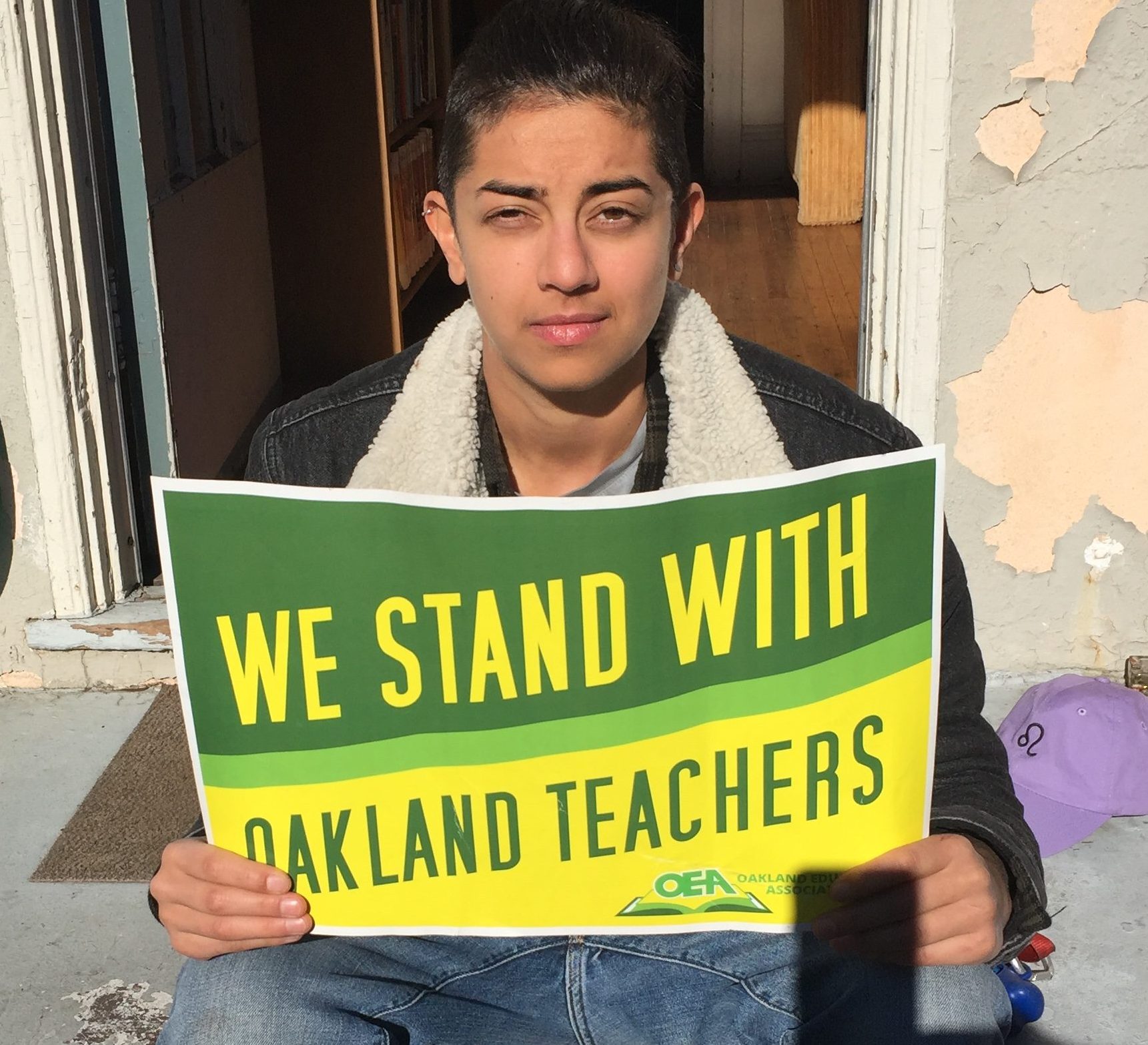
Reconstructing the South is an excellently planned role play — the questions and the sources really got students engaged in the moment of possibility around Reconstruction, rather than looking back on history as “an important lesson” but one that was predestined to turn out specific way. Students of all skill levels were hotly debating these issues, and were eagerly citing evidence to support their positions. One group of students went so far as to calculate a daily wage for freedmen and women to be paid if they agree to farm part of their land with cash crops for the government, and then attempted to convert the amount into its 1875 equivalent!
Students tied the activity into the next part of our unit around change into the Civil Rights Era, and studied the Montgomery Bus Boycott and Claudette Colvin, and now are engaged in the Black Panther Party. The activity really helped me as a teacher (still in my first year!) think about what makes awesome historical thinking questions that center the counter-narratives in American History. Awesome resource and I highly recommend to teachers. The only thing I feel could be improved is some suggested scaffolds for language learners in terms of the source documents.

I had a wonderful experience with the Reconstruction Role Play activity when teaching Reconstruction to my Race and Membership elective. The elective itself is about developing Race Relations throughout US History, from the origins of slavery to the present day. We look at a number of issues, but Reconstruction and its aftermath is a central element to the course. Because I teach in Memphis, I also encounter many students who have never really studied this period of history and among many of their families, the “Lost Cause” myth of the Confederacy is alive and well. This becomes very clear when we’ve held discussions about the role of Confederate Statues, how we memorialize certain periods in our history, and how we look at and come to terms with the history of our city and region.
The Reconstruction Role Play was very helpful in getting my students to the point where we could analyze the lives of those most affected by the events of this era. Stepping into the shoes of former slaves and white southerners, wrestling with the interactions between these groups, wrestling with the conflicting interests of these groups, and evaluating why Northerners eventually washed their hands of reconstruction efforts helped my kids begin to see this period for what it was.
I also supplemented this resource with materials from the Equal Justice Initiative, the documentary “13th” on Netflix, and readings from the Facing History and Ourselves Reconstruction textbook. I think that this time period is an essential history for our students to confront, especially in light of various current events. From incidents of police brutality, persisting mass incarceration rates, and the use of the death penalty and prison labor to the rise of white supremacy, the Charlottesville riots, and growing inequality across our nation, our kids need to know about the roots of these issues more than ever before.
I used the “Reconstructing the South” role play lesson in both of my two U.S. history classes (both AP and on-level), and was so encouraged to see how engaged and interested the students were. Moreover, I was fascinated to see how differently the two groups reacted to the same role play.
In the AP section, the group as a whole struggled to balance the desire to enact as full equality as possible (not only political and social, but also economic) with the fears of backlash and terror. As a result, they initially took steps that reflected an extremely moderate, even conservative, approach to Reconstruction, and were later shocked to find that they had an even more moderate plan than the one actually enacted with help from the historical Radical Republicans. One student’s reflection paper included the following comment: “I realized that we had internalized a devotion to the idea of ‘moderation’ to such an extent that we ended up not even being as bold as the real Radical Republicans in history. There was a definite sense that we could and should do better, and we must have more courage in demanding necessary rights and change.”
In contrast, the on-level section were passionately egalitarian and radical, undaunted by fears of backlash, because they felt that Reconstruction was a perfect opportunity to use the federal government’s resources to strongly and boldly enforce their plans to redistribute land and enact suffrage immediately.
A student commented, “I understand the fears about potential backlash, but we deeply believed that if Reconstruction had been more radical, more bold, and had done even more to solve the economic and class concerns shared by not only Blacks but also poor whites, Reconstruction could have continued on even in the face of extremism. We look at the lasting achievements like the public school system in the South as only one example of the kind of gift a more radical plan could have offered the cynics and opponents.”
My students enjoy and engage more with material that they can interact with. This lesson, “Reconstructing the South: A Role Play,” provided all of that. Students were able to question and critically think about their lives during this difficult period as freed slaves. Reading the primary documents and situations and then being allowed to deliberate on topics such as who and how one should own land, voting rights, and protection from the law.
I teach seniors in the inner city of Minneapolis and racial issues are alive and well even today in 2017. With this activity we had a honest conversation of housing discrimination, job discrimination, and overall racism. This lesson led to a much needed and broader discussion among young adults. I was happy to be involved in it.
I’m a new teacher and this is the first time I am teaching Reconstruction. I was unsure how it would go, but I love using materials that allow students to engage with the content. I decided to use this as an introduction to Reconstruction and overall, I think it went pretty well. I broke it down to two days: day one was some background notes and writing the monologue; however, I did modify it to be a diary entry or a letter to a relative instead. Day two was scheduled on a block (90 mins) which worked out great! I divided my class into two groups and held the debate in a “socratic” circle with one group as the inner circle and the other group, the outer circle. Since I have a large class and a small classroom, I figured this would be the best way for all students to speak and be heard.
The debate went really well for my 5th period since they knew how to use the material to role play a bit more than my 6th period. Some students led the discussion more than others, but all students got a chance to speak. I also held them accountable for participating by taking notes. One student said, “Although it’s the right thing for us folks, it would be political suicide to claim all the lands as our own.” Another student compared trying Confederate leaders for their war crimes to how the Nazi officers were treated. (Great historic comparison!) 6th period has a higher percentage of ELLs so it was difficult to differentiate this activity for them. However, most of them were able to still participate when encouraged to do so. As a closure, they completed the reflection questions and I also stated that even though they had a great debate, their voices as Freedpeople weren’t really considered in reality. I’m hoping that left an impact on students and I can refer to that once we talk about the Civil Rights Movement.
This activity is just what my special education United States History class needed to better understand Reconstruction. We are working on a more hands on learning atmosphere and this was perfect. I love your website and I can see the learning and fun occurring with my students. Kids love to act and play out a role, and it definitely helps them to maintain the material.
I used Reconstructing the South in my American History 2 class because I wanted my students to understand the ramifications of slavery and how that played out during Reconstruction. The only way they really grasped the concept of Reconstruction was through this role play. Although it’s a stretch to get them to empathize with others who aren’t like them, and from a different time period, I find it imperative that they continue to try.
One thing that helped my students truly comprehend what the Reconstruction period was like for African American women and men was the background history. It was short enough for struggling readers, but provided plenty of information. Also, I liked the handouts that stated the situations and arguments that various groups in South was grappling with. That arguments allowed students to know exactly how people during that period justified their actions. They really got into playing out those scenarios. The most important part of the lesson, though, was the questions that asked how students would respond to those same scenarios.
I teach in a residential facility. My students are almost always behind academically and so their experiences with school have predominantly been very negative. Despite this set back, I’ve been able to get them to participate when I create a class lesson based on conversation and discussion. When talking about the Civil War and the pervasive racism since then, it’s very easy for students to share their insight because many of them have had experiences dealing with law enforcement or have felt marginalized due to their race or appearance.
During the Reconstructing the South role play, the students had a chance to see things from a different perspective. Many of them reflected on why the racial tension was there and still exists today. The only unfortunate part of the lesson was when we had to end it. Two weeks after completing the scenario, the students are asking me for another one, or at least to do it again! Thanks so much for such a great resource!
This lesson was a very engaging experience for my students. I used this lesson in an 8th grade US history class. The class sizes were roughly 25 students each period. At first, students had some trouble grasping the concept of a role play debate. They kept trying to include their own personal feelings about the events of reconstruction instead of taking on the opinions of their assigned roles.
I did one day where students researched information about their roles and the next day was the debate. The first debate was a little shaky, again because students were unsure of how to play their role. After students got the hang of the role play, the actions took off. I had to stop arguments early for the sake of time. Students were really arguing with each other constructively about the issues. They were able to take many different angles to each issue in order to convince their classmates that their view was the correct view. After the debates were over, many students asked me if we could do this again. This lesson really sparked the excitement for learning within my students!
The Reconstructing the South role play really got my students thinking about the varying perspectives from the Reconstruction era. After the enactment, we had a lengthy “debate” in which the students had to argue what the government should or should not do.
Students then were given the assignment to research the current immigration conflict and find opposing, varying attitudes today, especially focusing on refugees. The Zinn Education Project role plays can easily be tied to modern issues.
I used the Reconstructing the South: A Role Play activity to jump-start the entire Reconstruction unit. It is important in my classroom to deal with Reconstruction, due to the far-reaching implications it has throughout the entire existence of the United States to the current day. Students received the Freedmen/women sheet to set the scene for the topic, then we dealt with the problems of the era sheet.
Students felt like they could bring to class their own elements of past history, as well as the problems that freedmen/women faced during the era. The prompt allowed for student freedom, as I facilitated discussion around the room. Students enjoyed this but also looked to me for advice and with questions often. The discussion students had, once into each problem, was meaningful and addressed the major challenges many faced at the time. Every so often, I would also chime in and guide students toward insight they may have missed.
Students really enjoyed the different nature of addressing history through this role play. They were able to critically think through the issues and struggled with others. After our role play, we continued to examine the role Reconstruction played in the post Civil War era. We examined its successes and failures, lastly touching on the ideas of mass incarceration and if Reconstruction truly was successful.
My student teacher and I recently used the Reconstruction role play with our 8th grade students. We only had to make minimal modification for this activity to work for middle school. We were genuinely amazed at the conversations our students engaged in. The scenarios and questions really made our students use critical thinking skills, which is often a challenge. Another bonus of these materials is that it covers Reconstruction in a way that students can truly connect with the experiences of the freed slaves. For a time period that does not always get the coverage it deserves, this project is absolutely perfect.
These materials have found a permanent home in my curriculum. Thank you for your time and effort in creating thought-provoking materials for our students.
While preparing to teach the Reconstruction unit this fall, I came across a powerful statement [from the intro of “Reconstructing the South: A Role Play”] regarding the typical treatment of the period in most high school classrooms: “What kind of country is this going to be? This was the urgent question posed in the period immediately following the U.S. Civil War. When students learn about Reconstruction, if they learn about this period at all, too often they learn how the presidents and Congress battled over the answer to this question. Textbooks and curricula emphasize what was done to or for newly freed people, but usually not how they acted to define their own freedom.” Needless to say, these words inspired me to seek out other resources beyond my textbook in order to help answer that important question.
“Reconstructing the South: A Role Play,” by Bill Bigelow, helped inspire my students by engaging them in multiple roles and situations that brought to the classroom lived experiences. Instead of merely reading about the lived experiences, my students portrayed and thus, really began to examine their own perspectives and paradigms of their lives and those of others through this experience. In short, I believe it was a powerful and meaningful, learning experience for all of us.
The material arrived just at the right time as I was getting ready to teach Reconstruction to my junior IB classes. I had them go through the first hand-out, then create characters (they really dived into creating authentic characters from the time), then we used the other material and had a good discussion during the role play.
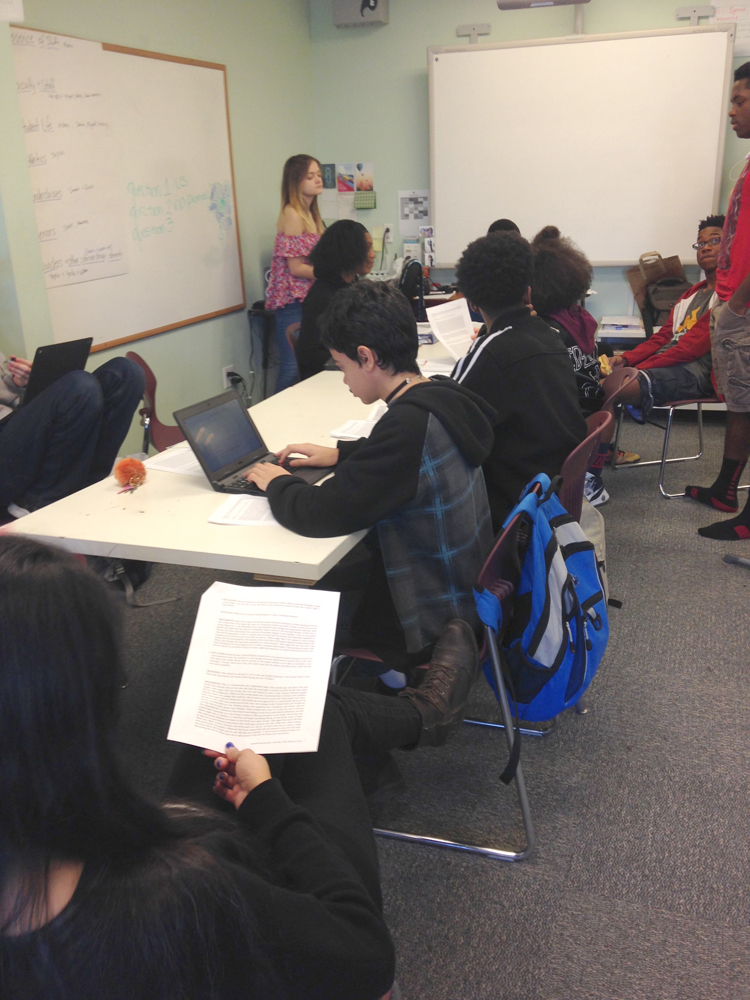 I implemented the lesson in my 9th grade African-American history classes. My students had previously engaged in Bigelow’s abolitionism role play and enjoyed the historical debates. Because of this experience, my students were prepared to engage in this lesson.
I implemented the lesson in my 9th grade African-American history classes. My students had previously engaged in Bigelow’s abolitionism role play and enjoyed the historical debates. Because of this experience, my students were prepared to engage in this lesson.
I split my class into three small groups of 10-12 each. In their small groups, students spent two class periods discussing the six situations. At the end, each group created plans for Reconstruction to propose to Congress. We evaluated the plans through the lens of healing and justice. As an introductory lesson to the Reconstruction era, students were able to grasp the complexity of trying to reunite the nation.
Reconstructing the South: A Role Play absolutely helped to enhance our understanding of the Reconstruction Era. While I have always spent a fairly substantial amount of time teaching Reconstruction, this lesson brought in new information both for me and my students.
Events from this era typically come up all throughout our year as we discuss civil rights and how Jim Crow Laws and segregation took hold for such a long time in our history, so when given the chance to look back on what freedmen could have done differently, many students, I would say the majority of students, wanted to demand the full distribution of land from the government. I think many saw it as a way to right the wrongs and try to change history for the better.
What I appreciated most about this activity is that it created more questions for my students as we finished up. They began to think about just how challenging this time period was and I think gained a better understanding of why this era needs to be studied closer and revisited throughout our year of U.S. history together.
I teach an Africana Studies class for high school students at a city college. Though they have a lot of anecdotal knowledge about the era already, the Reconstructing the South lesson provided my students with a raw, up-close-and-personal simulation of the challenges faced by newly freed Black Americans. In my classes, we always emphasize the symbiotic relationship between history and the present. When I think of “Aha” moments in the classroom, I’m reflecting on how we used the lesson to draw attention to severe inequities then, as opposed to now. We made charts and vision boards in which students got to animate and share their thoughts and strategies for survival then and now. The visual takeaways were most valuable.
Another powerful lesson was when two of my students shared stories about their OWN families—whose stories had been passed down from the last 1890s. These two students were able to share copies of letters and other material from their own families, who had roots in Mississippi and Tennessee. For my high schoolers, this proved to be most valuable because they were able to connect the lesson with the historical account and with their everyday lives. They actually began to see their own classmates in a way that may not have been possible without the creative stimulation of this rich lesson.

For this simulation, the students were paired into groups of 3-4 as they made decisions on the future of Reconstruction. This made it difficult for students to come to an agreement on the solution for each of the six Questions/Problems presented, because each member brought a differing perspective/values.
For example, the group of students in the first attached picture had an argument over the question of protection for the freedmen and women. One solution proposed by a group member was to revoke rights of gun ownership for those involved with the rebellion. Although most of the group agreed with this idea, there was one student who believed it was too radical and “resentment” would be the only major success of that policy.
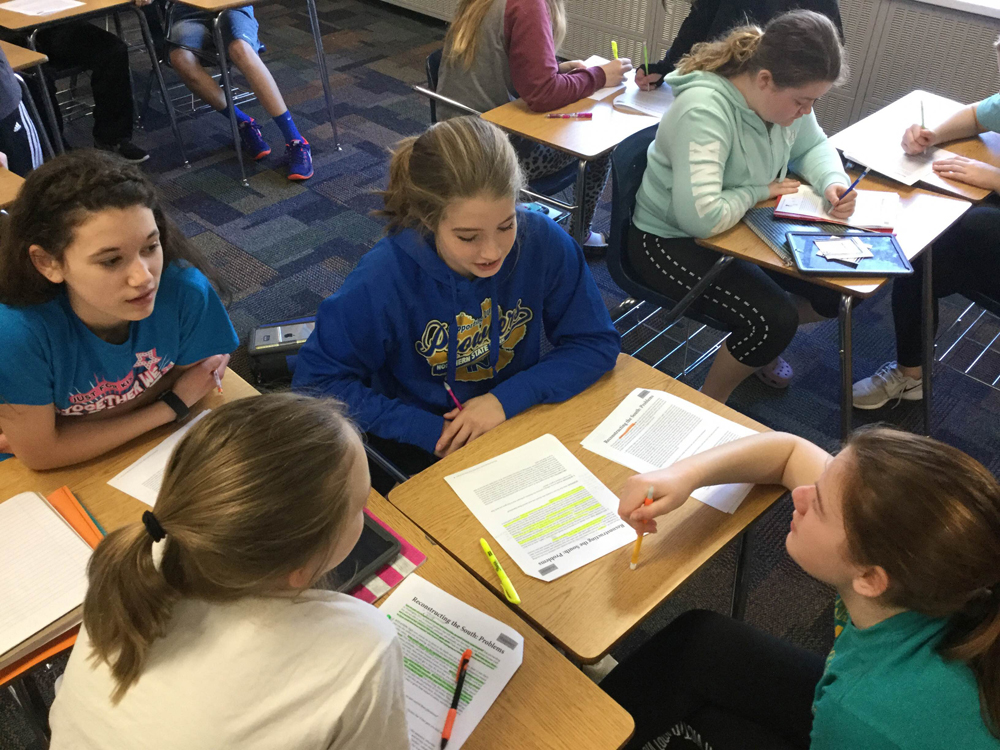 After class was done, I overheard the student (who disagreed with taking away gun rights for Southerners) in the hallway complaining still, how she cannot believe her group took that position. She said, “If we go to war again because of this, it is not my fault because I didn’t believe in that policy. I told them it was a bad idea and they didn’t listen!” I was happy to hear that the content from class was still on her mind, after the lesson had ended.
After class was done, I overheard the student (who disagreed with taking away gun rights for Southerners) in the hallway complaining still, how she cannot believe her group took that position. She said, “If we go to war again because of this, it is not my fault because I didn’t believe in that policy. I told them it was a bad idea and they didn’t listen!” I was happy to hear that the content from class was still on her mind, after the lesson had ended.
As for the students in the second attached photo (zoomed out view), there were some kids who finished their solutions early and were wandering around the classroom to see what other groups came up with. You will see a blonde hair student standing by another group of four. She dropped by to see what they came up with on the topic of consequences for Confederate leaders. She could not believe that they planned to have the leaders executed. She went on to inform them that harsh retaliation may occur from other Southerners if they carried out this policy.
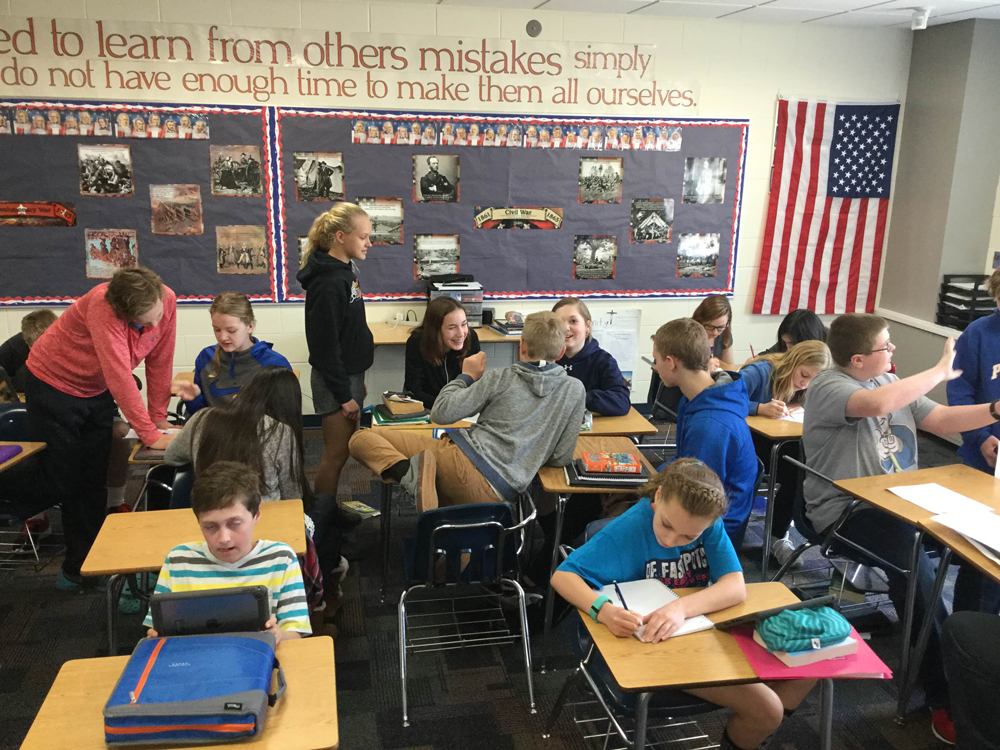 The group did not come to an agreement with this other perspective. They believed that as long as Confederate leaders survived, there was potential for danger. They even argued (using their present-day knowledge), that groups like the KKK, may have ceased to exist if these leaders were disciplined harshly. Once again, these students continued this conversation in the hallway later in the day.
The group did not come to an agreement with this other perspective. They believed that as long as Confederate leaders survived, there was potential for danger. They even argued (using their present-day knowledge), that groups like the KKK, may have ceased to exist if these leaders were disciplined harshly. Once again, these students continued this conversation in the hallway later in the day.
The students love to participate in these types of simulations and I would have to say that this one sparked an interesting discussion.
Thank you for the engaging activity!
I used the lesson plan, “Reconstructing the South: A Role Play,” in my pre-AP 8th grade U.S. history course. I began the lesson by reading the short article titled “Freedmen and Women” and had the students number the problems African Americans faced after the war. I then explained that the students were all Freedmen and women on a committee formed to voice their concerns to their Congressmen. The students initially met with their shoulder partner to figure out how they would solve the problems from the perspective of a Freedman or woman. The students had great conversations. When a student said that Confederate leaders should be executed and others should be stripped of their political power, a group member replied, “But wouldn’t that only make Southerners hate us more?” Another student wanted to send troops into the South to protect the Freedmen and women, and someone pointed out that sending the military to the South would be expensive. She questioned where the Union would get the money to send these troops.
After meeting with their shoulder partners, I had the students meet as a class. I followed the lesson plan and told my students that they as a group needed to come to a consensus regarding these questions and that I would not interrupt or provide any assistance. I also told the class that they needed to decide as a group the “rules of engagement.” The students decided to pick one person to lead the committee, and that student did a great job. I do not think that this lesson would have gone as well as it did without the leadership of this one student. My students voted on the proposals, with majority-rule winning. Some of their winning ideas consisted of putting the Confederate leaders on parole and moving them to the North to “watch them,” redistributing small portions of the land so slaves could have some economic freedom, and passing an amendment stating that no state can secede from the Union. Although some of their agreed-upon proposals were a little strange (such as moving all of the Freedmen and women to Canada), the students did participate in the role-playing activity. At the end of the lesson, one student asked if we could do more lessons similar to this one because she “had fun.”
I used this lesson for the first time in my 10th-grade American History course this winter. I often use Zinn Education Project (ZEP) lessons and always find them useful. Many “canned” lessons from other sources seem childish and phony, but never the ZEP lessons.
After a giving my sophomores a good background in slavery and the economic issues leading to the Civil War, I used the Reconstruction role play over the course of two days — one to prepare and one to carry out. I saw my students understanding the problems of Reconstruction much more fully than earlier students had. Getting into the skin of a historical character is so powerful, and the variety of characters give such a full picture.
My students tend to come from different educational backgrounds: some are international students who have little background in American history, some have a limited background, and some, especially those coming from public schools, think they know everything (“we’ve learned this a million times”). I believe the latter students learned the most from this lesson, as they saw the issues from the “inside” for the first time.
I will definitely use this lesson again next year.
This roleplay was a great way for students to put their knowledge into practice. I had my APUSH students read from their textbook and several primary sources before the exercise. There were many times they had to talk with each other to actually discover Point of View and Contextualization. This activity was very much like something I have done in the past, yet so much more engaging.
APUSH students were able to consider all points of view and especially the perspectives of newly freed African Americans and people in the West. When I have asked students to construct a Reconstruction Plan in past years even the most advanced students would not consider all peoples’ voices. This is a great way to get students to lead the class.
I have done variations on this type of activity for a number of years now. This however, was the first time I have had the students complete the activity through the lens of freed African Americans.
The Reconstructing the South role play took 3 class periods and involved deep and controversial discussion. The roster is primarily Black students in a charter school targeting students with educational gaps with many survivors of trauma. There were 2 unexpected directions this discussion went.
When considering what should happen to confederate leaders one student proposed former slave owners should have to become slaves for a period of time. Another student took the position that if slavery is “wrong” it is wrong for everyone and no matter how shamefully they had treated the slaves, that they should be treated with more respect so as not to become “like they had been.” There was quite a heated debate about what was “justice” and “eye for an eye” vs “do unto others.”
The other unexpected twist was how many students admitted to being “mixed” so it isn’t fair to only have reparations or consequences for folks who are “full.” This took us down the path about assumptions we make about others based on skin tone, how and why that happens today, and the conclusion that that isn’t how they want to be treated or treat others.
It was some of the best discussion and least resistance to writing (after the discussion of each question they had to write what they thought should happen and why) I have ever had. Thank you for making this available.
This lesson, “Reconstructing the South: A Role Play,” provided the real life relevancy needed by my students to grasp the concepts. The concepts of slavery and the freedmen is extremely difficult for my students. By using this lesson they started to question and critically think about this difficult period of the freed slaves. The primary documents and situations focused on Reconstruction topics that have been difficult to make relevant. I loved, loved, loved the interaction and especially the level of inquiry of this topic.
I teach 8th grade in Holmen, Wisconsin. Although a small town, there are racial issues, discrimination, and prejudice. With this activity, we had an honest conversation about discrimination and overall racism. This lesson led to broader discussions among my students as well as at home. Thank you for putting this lesson together.
Teaching Reconstruction is always a challenge. Teaching reconstruction in a homogenous, white, upper-class school in the north is even more of a challenge. How do I get my students to see the impact reconstruction had in the south? How do I get my students to see and understand the impact reconstruction’s failure had in the south and America up to today? These things have always led to me feeling that I am not giving my students the best when it comes to reconstruction.
This lesson plan gave me a way to teach reconstruction to the students that will have a lasting impact. It shows more than the “textbook” answers to reconstruction which focus on the battle for the south between whites. Reconstruction had the biggest impact on newly freed African Americans, and this lesson shifts the focus on the people who had to deal with the results of reconstruction. This lesson uses women, men, and documents to help put a “face” to reconstruction for my students. Something that will have a lasting impact!
In teaching U.S History, one of the greatest difficulties is to get students to be engaged with the content. Too often we teach it like a trivia contest to see who can memorize the most in the shortest time and then regurgitate it on a test. Then we move on. One of the things that attracted me to this lesson was the difficulty for students to opt out and the differing points of view that are often lacking in a textbook. The information provided in this lesson allowed my students to get more than a cursory glance of some of the issues that are brought up in the question of Reconstruction.
I particularly liked the excerpt from “Freedom’s Unfinished Revolution”…. The discussion questions included at the end of the document were well written to develop critical thought. There were good lower level questions that essentially asked for recall and then others that allowed for students to begin to synthesize multiple sources and build larger arguments.
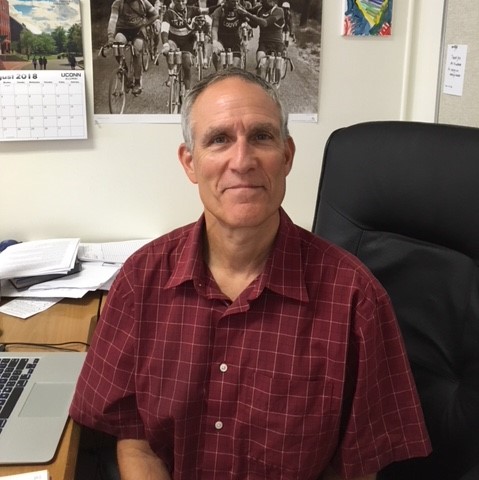
Teaching history is always so much more valuable when it can be done in such a lively manner as a role play. Painful history, especially, can reach kids more easily at times when approached in a dramatic and creative way.
Reconstructing the South: A Role Play enabled my students to see and feel the history in such a deeper way than merely covering the textbook. It truly helped to bring history much more alive for them and for me. And it opened their eyes on a personal level to the struggle for human rights and dignity that so many endured then and still do now.
In my classroom, I used “Reconstructing the South: A Role Play” to cap off our study of the Reconstruction Era. I used multiple lessons from Facing History and Ourselves: The Reconstruction Era Curriculum Guide. This translated into a very dynamic student-run simulation.
My two sections approached the simulation differently, one breaking into small groups to discuss various top priority issues and one electing to do so together. Through telling the stories they created, they advocated for personal possessions very well. The students approached topics of land acquisition, reparations by masters and the government, the right to bear arms, education, jobs, and fear and safety.
All students were asked to write individual reflections. The responses were fantastic. Many shared that in real life they know compromise wouldn’t have been so easy. My school has students from all racial and national backgrounds with a high percentage of international students, so finding common ground and empathy is often difficult. This activity undoubtedly broke through this impasse.
“Reconstructing the South: A Role Play” allowed for many of my students to enter into a simulation in which they could employ historical thinking. The simulation allowed my students to empathize with the plight of newly freed slaves in the United States. While many of my students started the simulation timid, they became empowered with their new status as freedpeople. Several students chose very moderate positions on the postwar questions and status of former slaves and ex-confederates. If I did not have any students take a hardline approach to ex-confederates, I intervened, and many students joined in the idea of harsher punishment for them and greater freedoms for the newly freed people.
Through this exercise, students gained a greater understanding of the historical implications of issues unresolved from reconstruction. Students carefully listened to multiple perspectives and articulated their own views in gaining rights as new citizens. Coupled with an excerpt from “Lies My Teacher Told Me” students have explored viewpoints and perspectives that they may not have previously discovered.
The role play was an excellent way to get students to consider the complex issues and questions facing the country and freedmen at the end of the Civil War. I gave students the “Problems” questions on day one and told them that the next day I would not be guiding them, and they would have to decide how to conduct the proceedings.
It was fascinating because they quickly decided to arrange the desks in a circle and started discussing a format for their discussion. It evolved into a co-chair system, with one person introducing the question/issue and the other facilitating the discussion. They decided to vote after some debate. The facilitator summarized the discussion and then conducted a vote. Afterward, I assigned some reflection questions on goformative.com.
One student comment indicated how useful this exercise was: “It was difficult to come to a specific consensus. For instance, we can all agree on punishing Confederate leaders but agreeing on HOW to punish them is very difficult. Freedmen and women had been excluded for centuries, and people don’t like change. It is very difficult to accept such a change like that.”
This captured the ambiguity and complexity and uncertainty in addressing these issues. They showed a keen awareness that resolving some of these issues was going to be longterm.
I used the Reconstructing the South role play materials in Augustana College’s winter symposium day on the theme of “privilege.” We had a good discussion and felt the challenges in addressing the questions. We felt that even with the benefit of 20/20 hindsight, we didn’t have adequate solutions that would result in less racism and inequality in the post Reconstruction period up through the present.
For instance, while we agreed that we freed slaves earned the right to own much, if not all, of the land we toiled on, we were concerned about our wellbeing. How would we keep the heavily armed former slave-owners from hurting or murdering us? On this question, we came to the conclusion that freed slaves should earn a percentage of the profits earned from the land, but not be required to operate them. We wanted to go north, even though we knew they were racist up there too.
In the end, we all wanted to know more about what actually happened during Reconstruction. This was encouraging. I urged participants to read Du Bois’ Black Reconstruction as well as Foner’s Short History of Reconstruction.
My eighth graders have embarked on a significant journey this school year. We are attempting to understand how systems of racism in the United States have changed over time. This past week we jumped from understanding the origins of race and racism through the system of slavery to the opportunity of Reconstruction following the Civil War. In order to get students imagining what was possible, we used “Reconstructing the South: A Role Play” to kick off this portion of our unit.
Students worked together in small groups and independently to answer each of the six questions within the activity. Students were engaged and collaborating effectively. However, the real magic took place when we had a whole class discussion/debate about the best solutions.
There were clearly two ways of thinking for the students involved. On one side were students who were thinking pragmatically and trying to be realistic about what they thought they could have actually accomplished at this point in history. On the other side were students who were focused on doing what they believed was morally right and what solutions would best ensure the continued liberation of recently freedmen and women. The back and forth was powerful, and students were highly engaged in the process of not just thinking about history but participating in history. Finally, at the end of the day was a comparison between the solutions that won the argument and what decisions were actually made in history. The shock and disappointment were palpable.
I used this lesson today in my US History courses. It was my first time using this lesson, and I loved it. I plan to use it again in the future. I loved the way it introduces Reconstruction as a topic and the way it forces students to take on another role to think about the “freedom” or lack thereof at the time.
My students did wonderfully in taking on new roles and examining the issues of land ownership, protection, and voting. The way in which the lesson is designed allows students to engage in the complexity of history. I was reminded of a James Baldwin quote as they went through the tasks… something along the lines of “American history is both beautiful and terrible.” I find students always love being able to tackle issues in class that engage them in history. This activity was well-liked by most students because it allowed them to be active learners of history as opposed to the typical passive learning that is often thought of in history teaching.
A few students commented that it was incredibly difficult to come to a simple conclusion. They said it was too complex. A few students even mentioned the ambiguity of the solutions and how that was hard to rectify. Students appreciated the discussion and a handful of them really immersed themselves in their roles. I look forward to using more Zinn Ed lesson plans in the future.
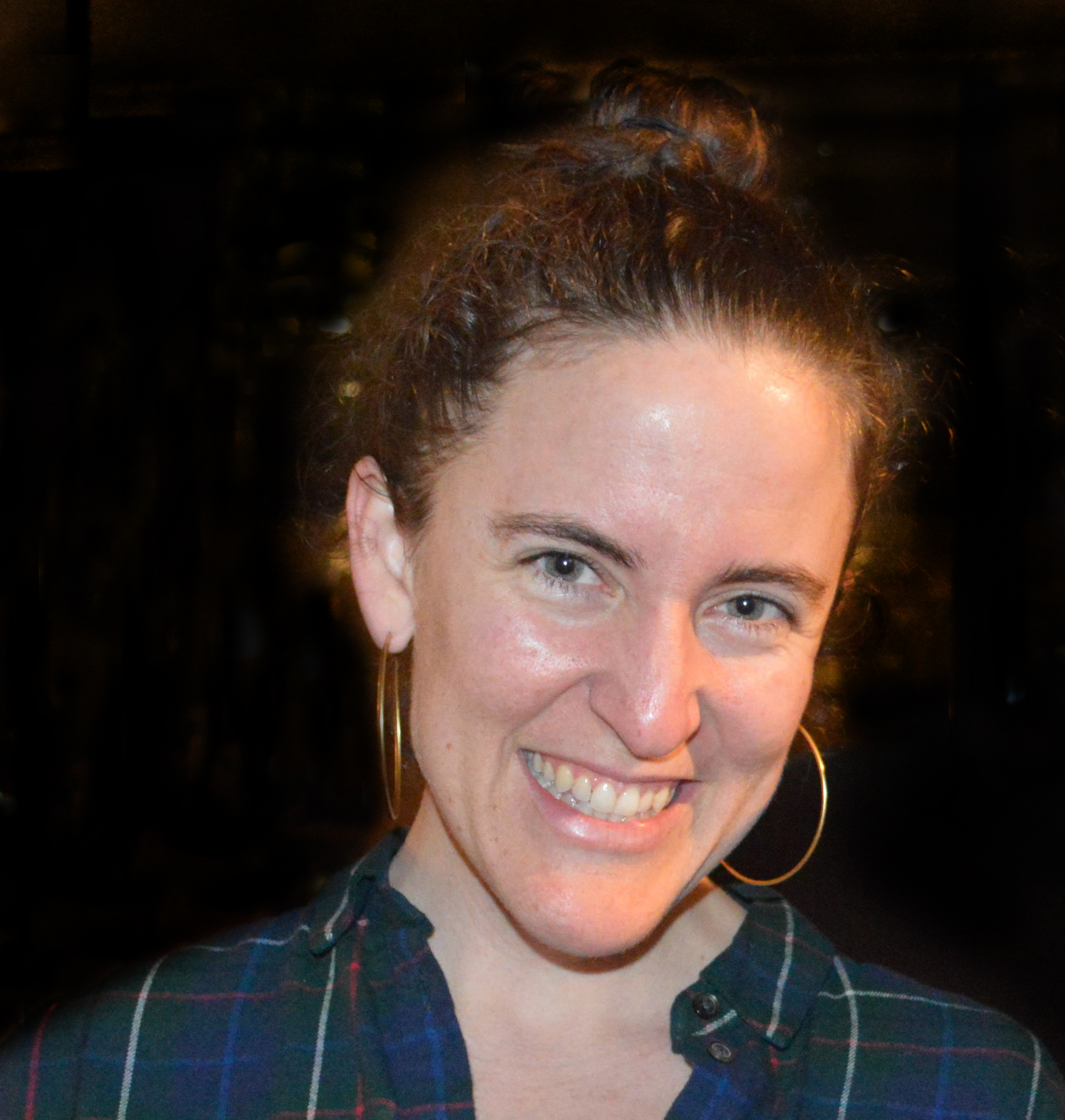
“Our delegation should only advocate for the black male vote,” an 11th-grade student proposed during our “Reconstructing the South” role play. “We have to be practical,” he insisted, having taken on the character of a freedman in the South. “If we ask for too much, we’ll walk away empty handed. We’ll fight for the women’s vote next.” A few students’ heads nodded in assent before a dozen hands shot up.
“Absolutely not,” a young woman responded. “We haven’t resisted slavery for 250 years only to continue to be disenfranchised. The Civil War is over. Now is the chance to demand what we rightfully deserve. Plus, Congress needs us. We grow cotton. We have organizing power.” And so the debate continued, heatedly, for sixty uninterrupted minutes, moving from voting rights to land redistribution to issues of safety and gun ownership.
Starting the unit with the big picture debates not only made for an incredible day of student-led discussion but also kept the students engaged for the entire unit. After coming up with their own proposals for land distribution through the role play, for instance, students were eager to predict and then “find out” what actually happened, gobbling up the ZEP readings following the role play with uncharacteristic enthusiasm. Even long after the role play lesson ended, students kept returning to the deeper debates of justice and retribution, radicalism and realism, equity and equality that animated the role play.
Running ZEP’s role play at the beginning of the Reconstruction unit was an incredible experience—the absolute highlight of my teaching career to date. I only hope I can frame future units in such a way that propels students to grapple with complex, unanswerable questions that have inspired centuries of struggles for justice.
In one of the scenarios, our students answered “we should have a 3/5 compromise for former Confederates,” not allowing them to vote, yet counting them as 3/5 for purposes of the house of representatives and the electoral college.
Students found it engaging to make decisions about the future of their lives. They liked that the scenarios gave benefits and disadvantages of making specific choices.
As the teacher, I loved that the lesson had great guiding questions with well written, historically accurate activities that provided a great background of Reconstruction. In this time we are living in it is important to see how we got here. Our students were able to draw connections between the experience of African-Americans today and the legacy of Reconstruction.
It was simply amazing to see the interaction and the engagement among my students while using this role-play. Due to my district’s scope and sequences, we are only able to study the period of Reconstruction for roughly three weeks. Three weeks does not allow ample time to break down the period of Reconstruction, but this role-play allowed my students to see the hardships that freed-blacks endured as they dealt with life after the war.
One of my students mentioned that they never realized “…the shift from being enslaved to free would be so hard for African-Americans. [They had] just assumed that African-Americans would travel to find family, find a job, and fight for their civil rights. This opened my eyes to a new understanding of the trials that African-Americans had to go through during Reconstruction.”
Another student mentioned that they had never considered the fact that, technically, freed-blacks didn’t even own the clothes that were on their backs, and that it would have been so hard for them to find work or find a way to be paid.
Watching their eyes open up to a perspective of African-Americans and not a textbook’s view was an amazing experience as a teacher.
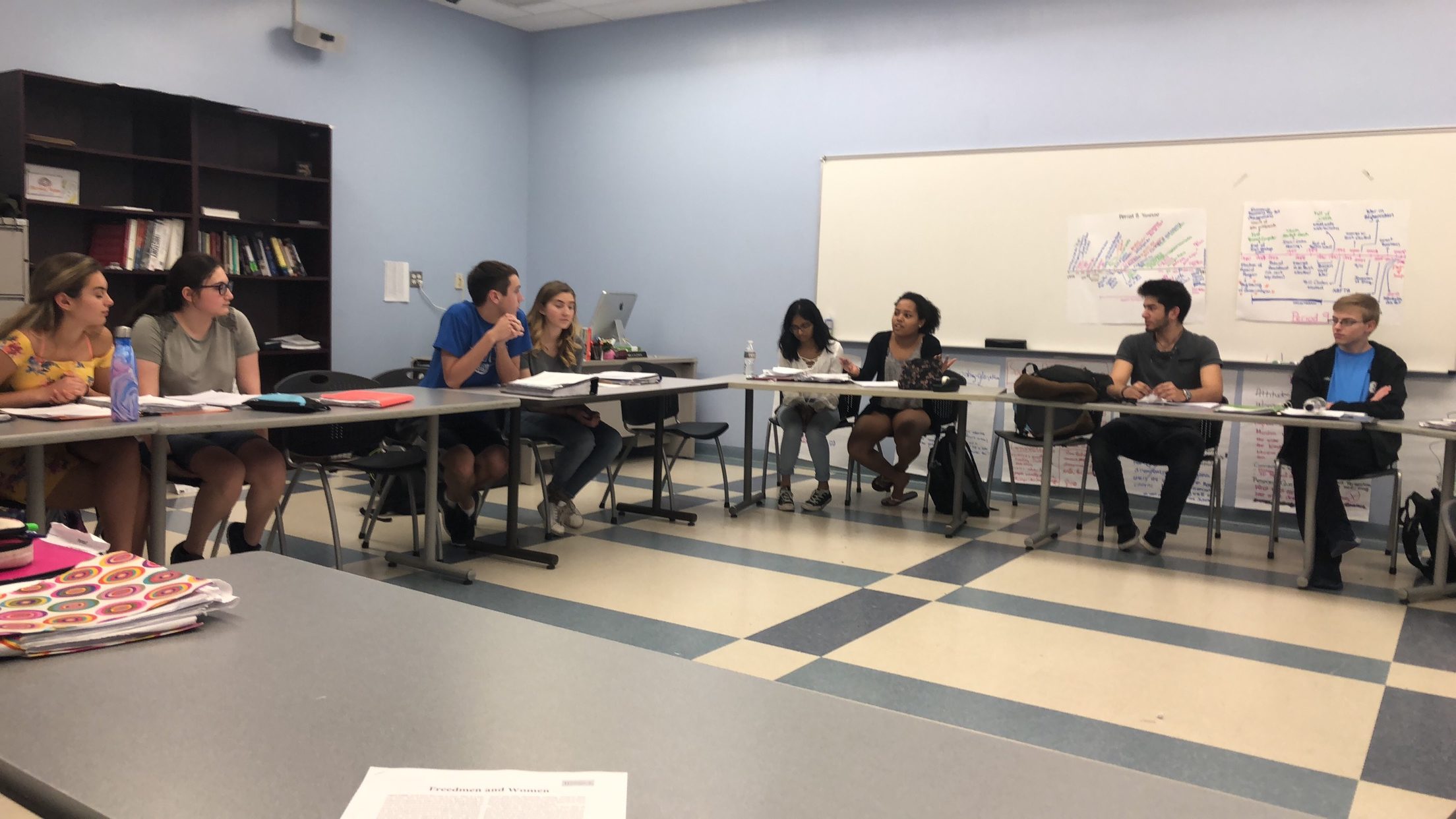 I teach U.S. History I Honors in a math and science magnet school. I like to start my units with a hook and provide creative and engaging lessons. My students had just finished learning about the U.S. Civil War, studying everything from the Anaconda Plan to President Lincoln changing the aim of the war from union to emancipation.
I teach U.S. History I Honors in a math and science magnet school. I like to start my units with a hook and provide creative and engaging lessons. My students had just finished learning about the U.S. Civil War, studying everything from the Anaconda Plan to President Lincoln changing the aim of the war from union to emancipation.
While searching for resources I came across the “Reconstructing the South” lesson and loved it. I set up the classroom and introduced the activity. For homework, the students came up with a name and wrote their personal narrative. The next day, I told them what we would be discussing but left it up to them to arrange the order. They decided to have conference-style setup, with one leader to move along the discussion. I loved the fact that they made it their own. They were well into character and discussed things that mattered to them.
In the end, I had students debrief the activity and some of their answers included:
“I was mostly satisfied with the outcome of the delegation because most of my arguments were voted for. The only question where I was disappointed with the outcome was the fifth question, what should happen about revenge from defeated soldiers and plantation owners, when I believed that nobody should be allowed to hold guns. The class decided that the Union army should occupy the South until tensions decreased.”
“We gave women the right to vote at the same time as Blacks. I was very satisfied with the outcome for most of them. I think we’ve all really learned from our reading and our characters.”
“I was satisfied with the outcome of the delegation because I was able to actually contribute something to the conversation for the first time and it was more fun than usual because each person had a role to play in answering the question.”
We timed the “Reconstructing the South: A Role Play” not too long after the students watched the documentary “Roots,” so they had a very good idea of the horrors of slavery and how degrading and traumatic the system was. Having this background, the students felt justified in some ways for taking land. However, there were also those who realized there would be backlash and animosity from southern landowners. The role/reversal example of taking lands from the Native Americans really made them think as well, but ultimately they focused on the unpaid debt of their forced labor for generations and felt entitled to ownership. Two out of the three sections voted to take the land, with the one vote being a razor-thin margin that could have gone either way.
The role play succeeded in showing the tug of war that was Reconstruction. Activation of prior knowledge kickstarted discussions over issues like who would protect the freedmen and women from hostile groups like the White League and the rise of the KKK? The focus on land and property ownership, and the political influence it brings goes a long way in understanding why the groups mentioned above had everything to gain by resisting the forced Reconstruction of the South. I would highly recommend this simulation because the simulation itself is relatively brief, but the discussions and question/answer periods were extremely thought-provoking!
I used a modification of the “Reconstructing the South: A Role Play” lesson on the Zinn Education Project. This lesson is so rich in primary documents that I had not seen before this lesson, so I knew that I wanted to expose my 11th graders to them, and I also knew that I wanted to center the authentic voices from the Reconstruction Era in our Reconstruction lessons.
I put students in small groups, and each group was assigned a set of thematic documents. Students used the documents to answer the Essential Question, what were freedmen’s needs for freedom? I used Bayley Wyatt’s document, Thaddeus Stevens’ document, and Frederick Douglass’ document, as well as documents from other sources. The next class, we did the role play activity with selected representatives that students chose as our “actors.”
These activities enabled me to share an equally engaging and rigorous lesson with my students. Students found the documents rigorous, but I was pleasantly surprised at how many of them found them shocking. Students were shocked by how radical, and punitive Thaddeus Stevens was towards the South and empathized with Wyatt and his experience of abandonment and poverty.
Students were more engaged in the role-play activity, as expected. I was shocked by how quickly students got into character as they read the questions and was pleased by how students were able to consider the different perspectives behind the possible answers.
Overall, the documents and role play activity enabled students to inject themselves into this moment of history and to use the materials and questions to consider the tremendously difficult and important decisions made.
I used the “Reconstructing the South: A Role Play” with my students and they were excited to be able to role play. I was excited that they would get to see Reconstruction from multiple viewpoints. We had gone over the various Reconstruction plans, but this activity allowed them to go beyond the political and experience Reconstruction’s impact on the people living at the time. I followed up the activity by showing the documentary “Slavery By Another Name” by PBS. This film was the perfect way to show the failures of Reconstruction and the long-lasting impact of those failures.
Rather than using the lesson as a whole-class, multi-day lesson, I spent about an hour with it to introduce the controversies and complications of the era. I divided students into small groups and gave each group a question to discuss. Students seemed to struggle with how to approach the discussion with their group members, so I decided to have a whole-class discussion of one of the questions not chosen by the students. It happened to be Question 3, “What do you propose should happen to these Confederate leaders?”
The benefit of choosing Question 3 was that students were very passionate about their choices and it led to a level of discussion that I have not previously had with the group. It was also interesting because many students made comments reflective of the various Reconstruction plans, as well as the philosophies of Booker T. Washington and W.E.B. DuBois – all without knowing any of those ideas previously!
I heard student comments of, “Yeah they should be punished! Have you ever heard the saying ‘A closed mouth don’t get fed’?” I also heard students remark “Silence speaks louder than words,” in support of not seeking retribution against former Confederates, but instead letting the future successes of African Americans speak for themselves.
The discussion provided me with an effective way to help students explore the various Reconstruction plans and ideologies of prominent African Americans without lecturing at them or boring them. Because they “experienced” it, and reasoned through it themselves, I feel confident that they are much more likely to remember the content than if I had tried to force it into their brains myself.
I find both of the Zinn Ed lessons on Reconstruction to be well thought out and immediately useable for teachers with very little prep involved. The procedure instructions and pre-teaching comments are relevant. Thank you for providing this resource!
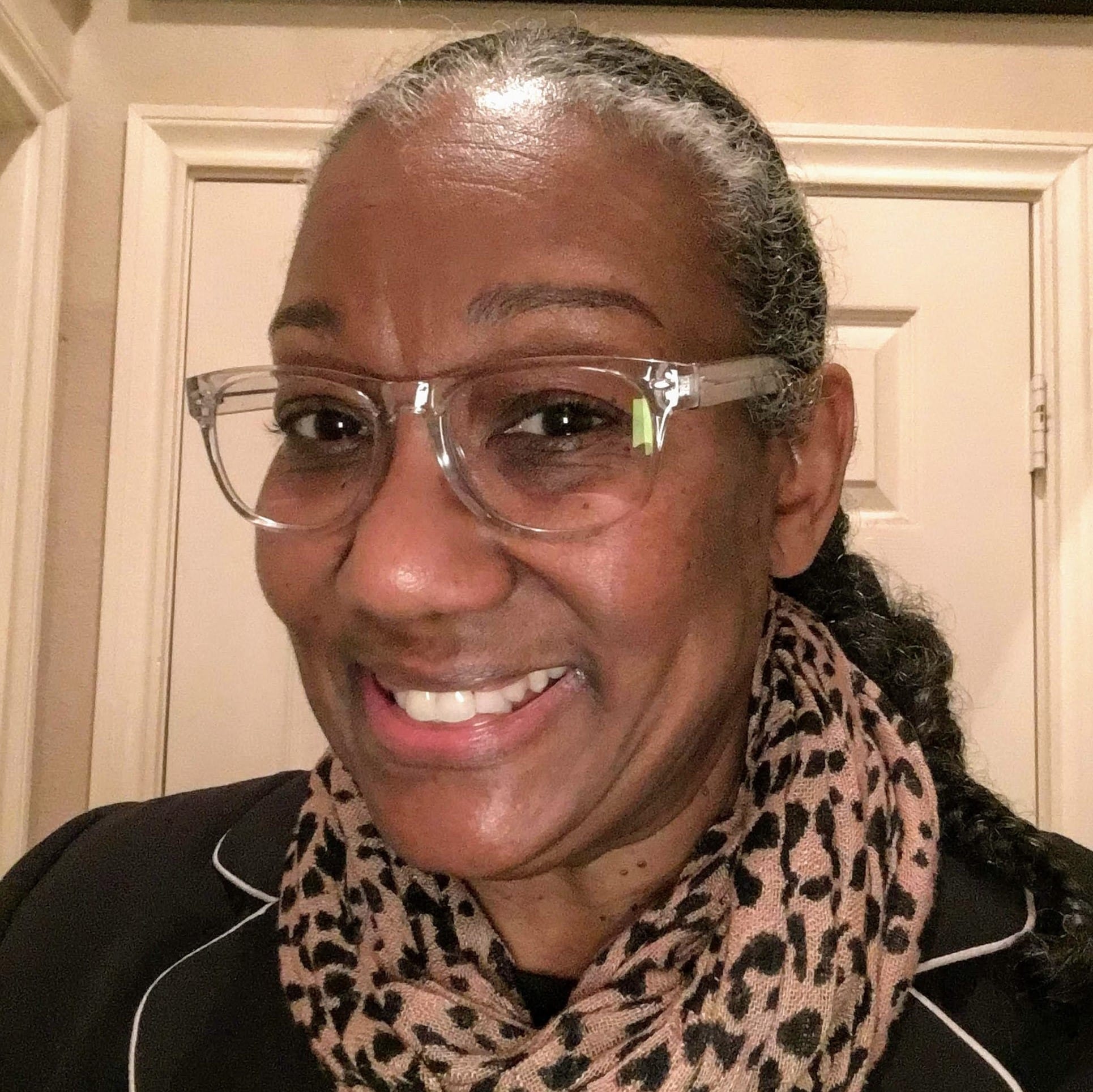
As a high school history teacher and a lifelong learner of history, I know it is VERY important for our students to understand the Reconstruction Era.
Although for many years this period in U.S. history was painted as a “failure,” the rich history of formerly enslaved African Americans is important for young people to understand and to see for themselves in the making of this nation.
When I teach Reconstruction, history comes alive for my students. They see their ancestors as more than just enslaved people, but as people who took agency over their lives to create a better future for their descendants. The strength of the historic figures of this period, whether well known to history or not, gives students the representation they need to feel engaged in history. Additionally, students start to make connections from the past to the present knowing that we as African Americans still have a way to go to achieve equality and parity in this nation.
After teaching the Reconstruction period, my students see why the push back of Jim Crow became the national norm and they vow to find ways to claim their seat at the table to crush that ugly spirit. Teaching Reconstruction is fulfilling for me as an educator and very necessary for my students to understand as they move to become the future leaders our country needs to survive.
As a former Facing History teacher and now a U.S. history teacher, I use many Zinn Education Project resources. My students always come alive during lessons about slavery, Civil War, and now Reconstruction.
My students love participating in the Reconstruction Mixer. A lot of my students have a hard time understanding why racism, sexism, and overall hate exist. During the mixer, especially last year, students experienced how hard people had to work to try to bridge alliances and fight. They see that even though the formerly enslaved were now free, the battle for their rights continued. They see how women, even white women, still did not have equality. Their eyes open wide as they learn from each other how people can help or hinder a movement.
One student stayed after class to talk about the last question, about finding someone that you could take common action with and what action you could take. This student had Elizabeth Cady Stanton and he really was fighting for her causes. This young man of 13, who normally only thinks about himself and his needs, stopped to think about his role. He talked to me about how he can’t believe that women still are treated less than equal and asked what could he do to help. We had a talk about how he treats the girls and women in his life, how he allows other boys to talk and treat girls around him, and how can he be an example for respecting others that are different than us. He talked about how he knows what it is like to have to work to be seen. His words were so touching and we had weekly check-ins to make sure we were working on equality and equity in our school among the students and staff.
This is just one story of the great things that happen when using the Reconstruction Mixer. My students earn a deeper knowledge of the issues, and ways that divide us as people, and how to keep working for justice.
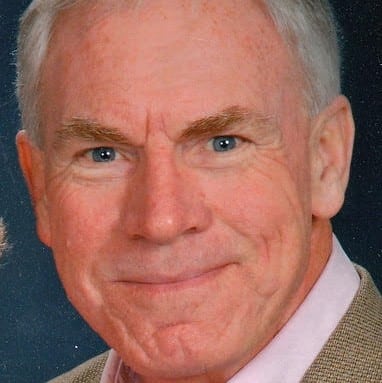
Without Reconstruction, and the century long struggle that followed over the 14th Amendment, the story of the Civil War is hollow.
1865 is but the end of battle, and the military victory of the North. . . but Reconstruction is about the CULTURE war that followed for over a century and whose legacy still confronts us.
Without that study, none of us can understand the Civil Rights Movement, the statues controversy, redlining, Tulsa 1921, etc. Without that narrative, we can’t understand and appreciate Hiram Revels, the KKK, Ida B. Wells, or the Diaspora. It’s like getting one-third of the way through a book then dumping it.
The story wasn’t over in 1865 . . . so the history lessons shouldn’t be either.
You cannot possibly understand the rise of the white supremacist movement in the U.S. today, without understanding its historical antecedents. This is why we teach U.S. history.
Our past, while painful, has value only in that we cannot progress from it without this knowledge. The teaching of history should never be politicized whether it is popular or painful. The scourge of mistruth, lies, and outright “cancellation” needs to stop at the schoolhouse door.
The Reconstruction period is massively overlooked in typical U.S. history classes, but provides perhaps the most meaningful insight into how our society looks today in terms of race and class divisions. More so than any other American historical period!
The stubborn survival and expansion of systemic racism have their roots in the resistance to, and end of, Reconstruction.
The topic of Reconstruction represents the “Second Founding” of our country, as historian Eric Foner argues. It is also arguably the least taught or most poorly and falsely taught period in U.S. history. Often caricatured as a failure as the result of Black Americans and Abolitionists, in reality, this period shows the successes of Black Americans to carve out their own lives in the face of growing terror, lynching, Jim Crow segregationist laws, and neo-slavery (from Douglass Blackmon), i.e., the human trafficking of African Americans up until World War II, and even later.
The work of a new generation of African American leaders like W. E. B. DuBois and Ida B. Wells in response to this oppression laid the groundwork for the modern Civil Rights Movement. So, I teach to this history more in my classrooms in order to support students of color and white allies seeking historical role models and Constitutional precedents for fighting injustice today, and would urge more schools to teach a revised and truthful version of Reconstruction to more students in the future.
The truth needs to be known that justice was not served to the freed people. Although the government did try during Reconstruction, and there were successes during this time period that proved African American ability and talent, it was cut off too soon and Jim Crow was allowed to prevail.
The upsurge in white supremacy and the continuing attacks on people of color show the necessity of teaching this important era in U.S. history.
This important period in our nation’s history provides insight into what might have been — rather than what has been — our nation’s political and social history. As we continue striving towards a more perfect union, it is time for our nation to shine light into the shadows of darkness we have allowed to be created. Let us open, inspect, and clean our national closets.
The lessons, treasures, and truths to be unearthed will help further reveal the complicated tapestry of our nation and provide us with alternative opinions and options for moving forward collectively.
Understanding the Civil Rights Movement of the 1950s and 1960s is much easier with a historical foundation that begins with the broken promises, violence, and anti-democratic disenfranchisement legislation of Reconstruction.
We are not Nazi Germany — yet — where education became a tool of propaganda and books were burned in the streets. So, yes, the truth of Reconstruction must be taught so that students can understand the transition from slavery to Jim Crow to the Civil Rights Movement to the renewed attack on voting rights in this country.
Kids should know that the struggle for equality is a real one.
We welcome more stories. Teachers who send us feedback receive a free book.
Learn more in the Zinn Education Project national report, “Erasing the Black Freedom Struggle: How State Standards Fail to Teach the Truth About Reconstruction,” and find teaching resources on Reconstruction below.

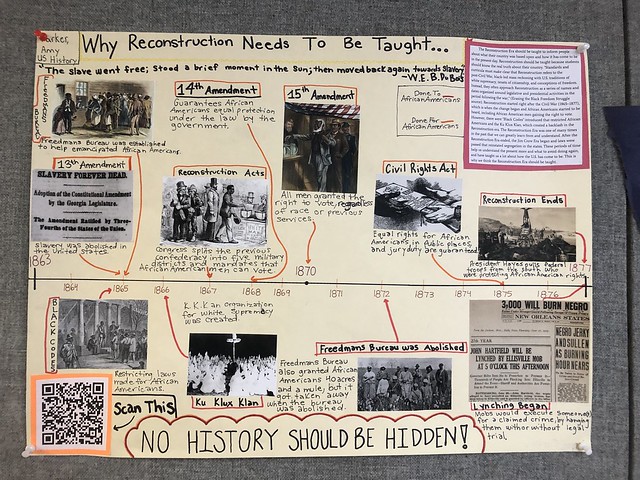
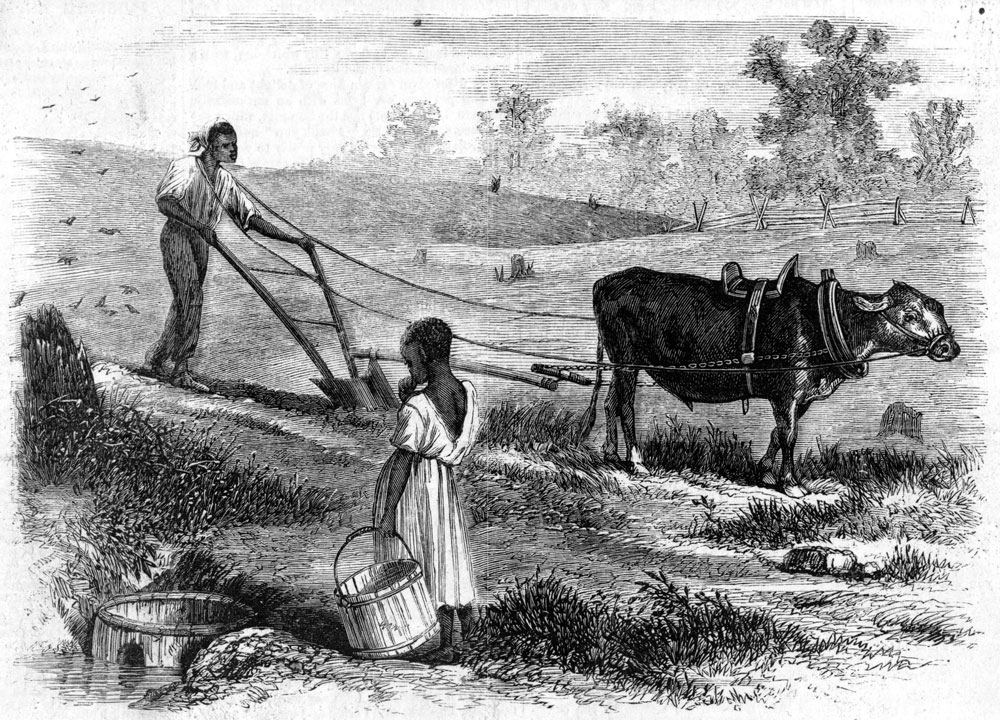
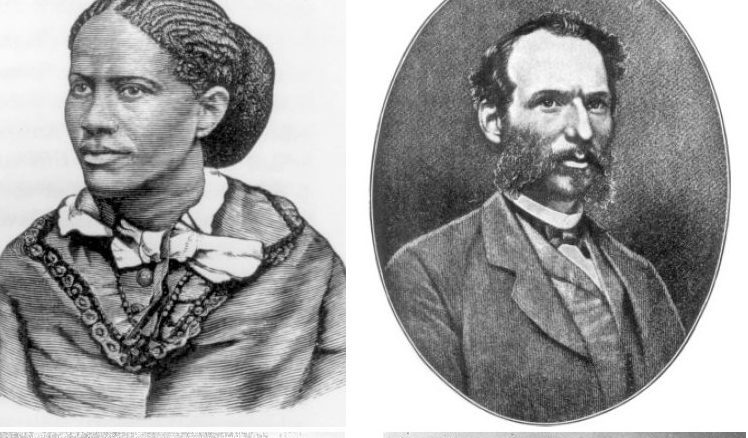
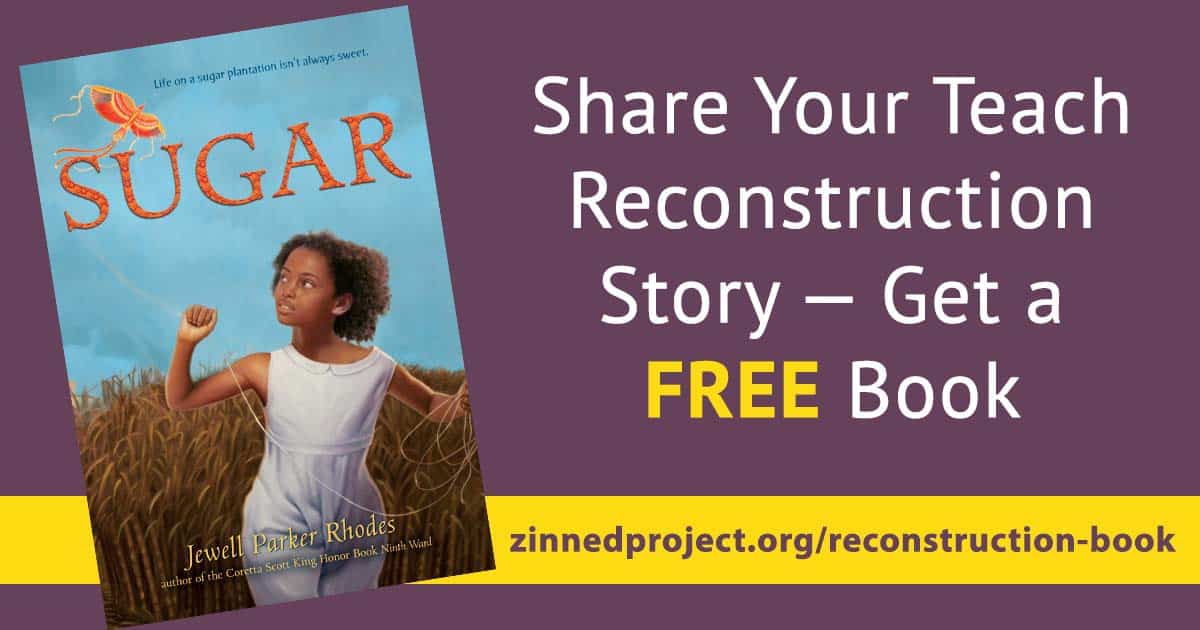





Twitter
Google plus
LinkedIn